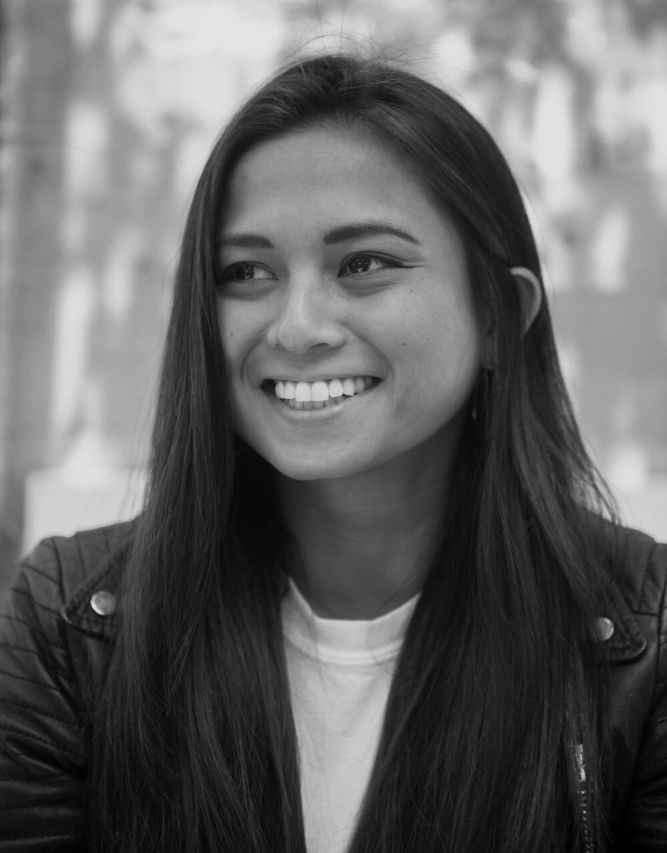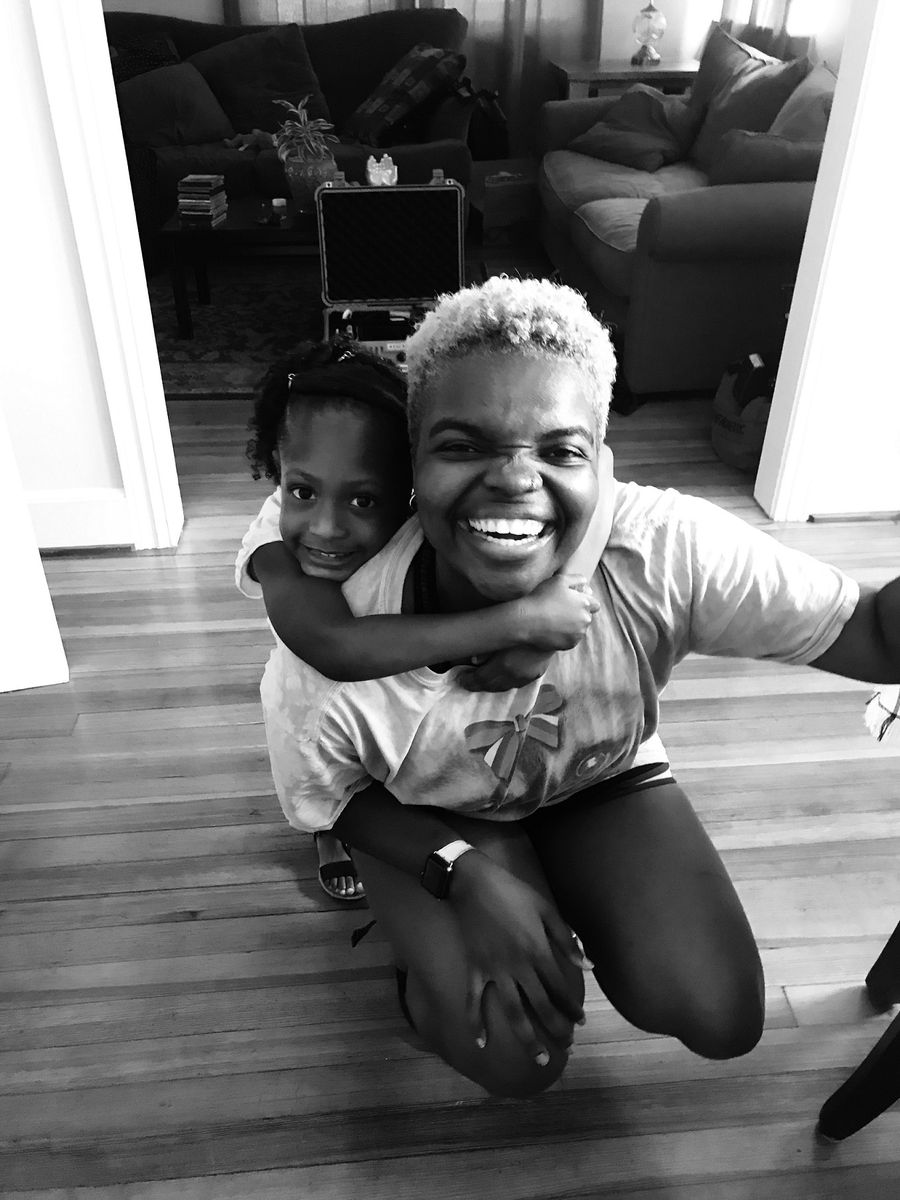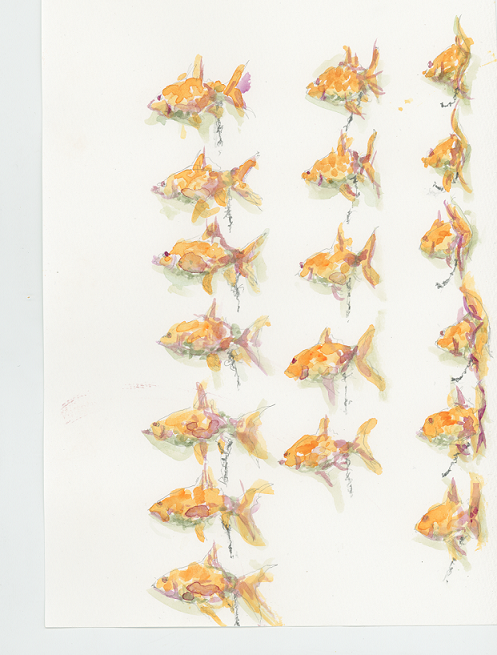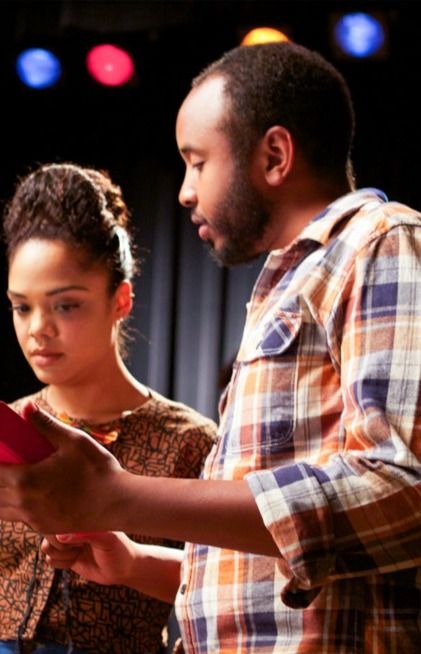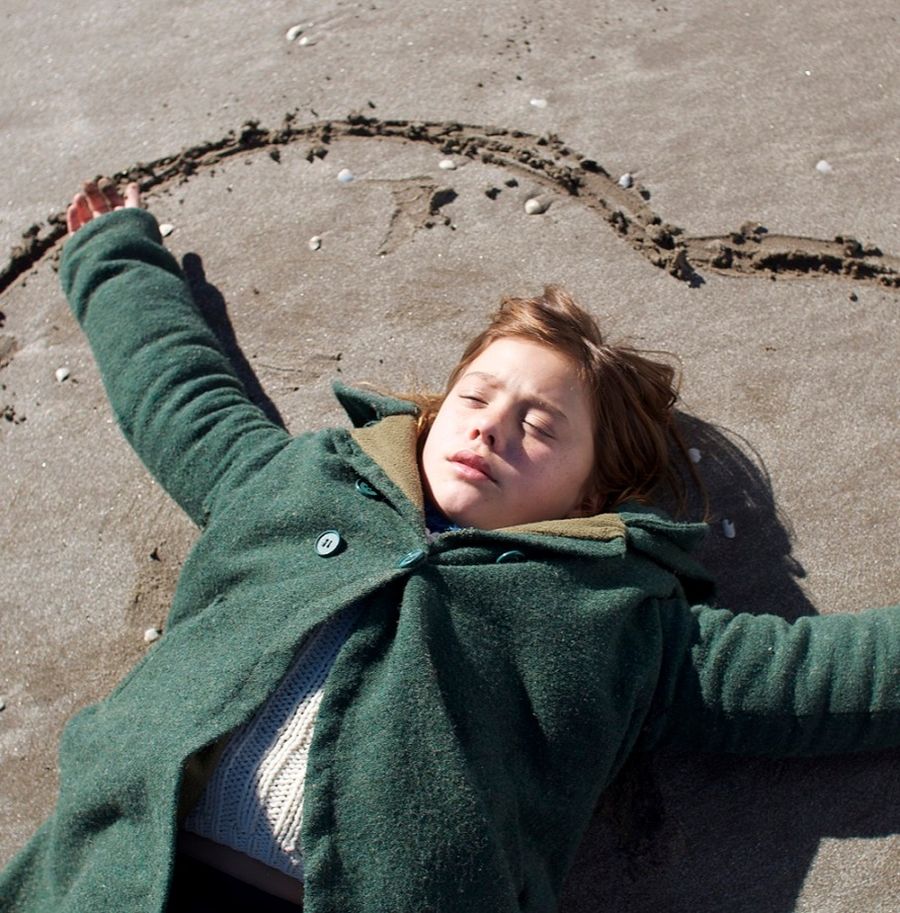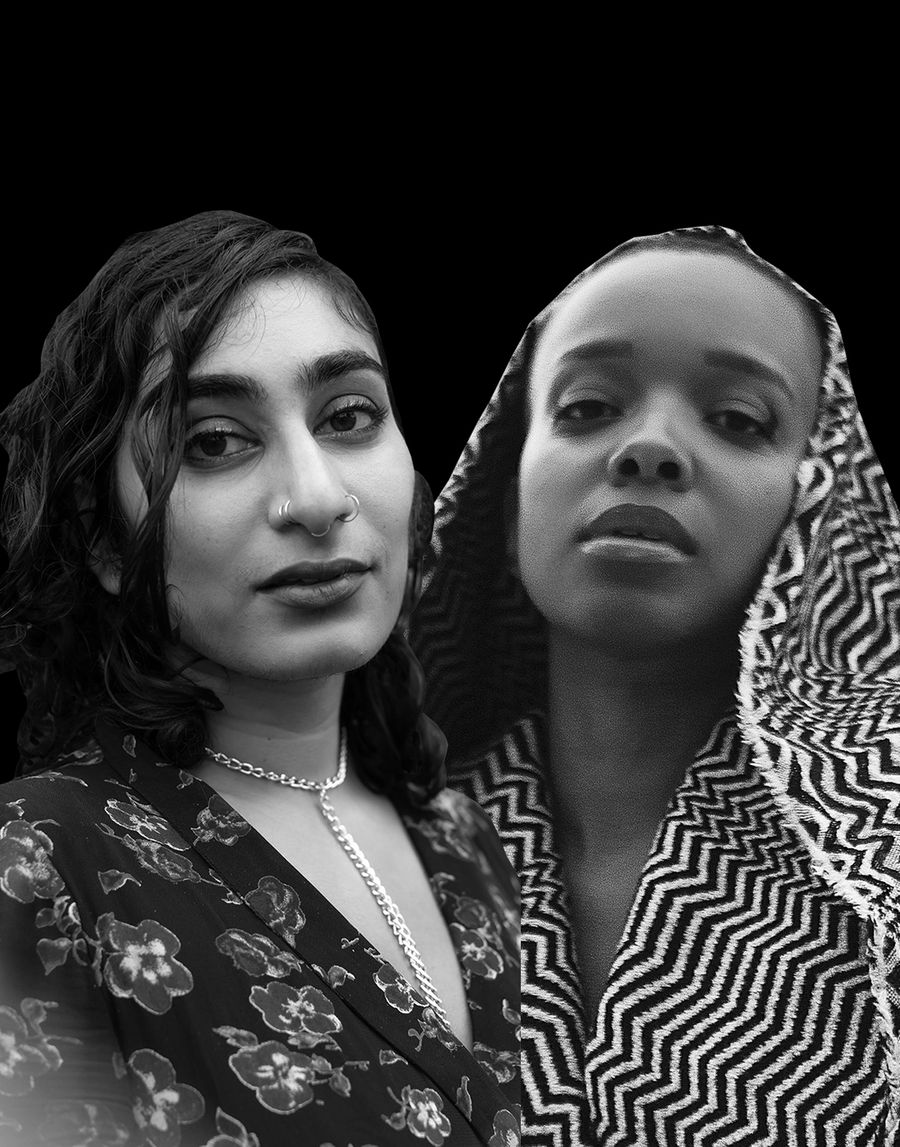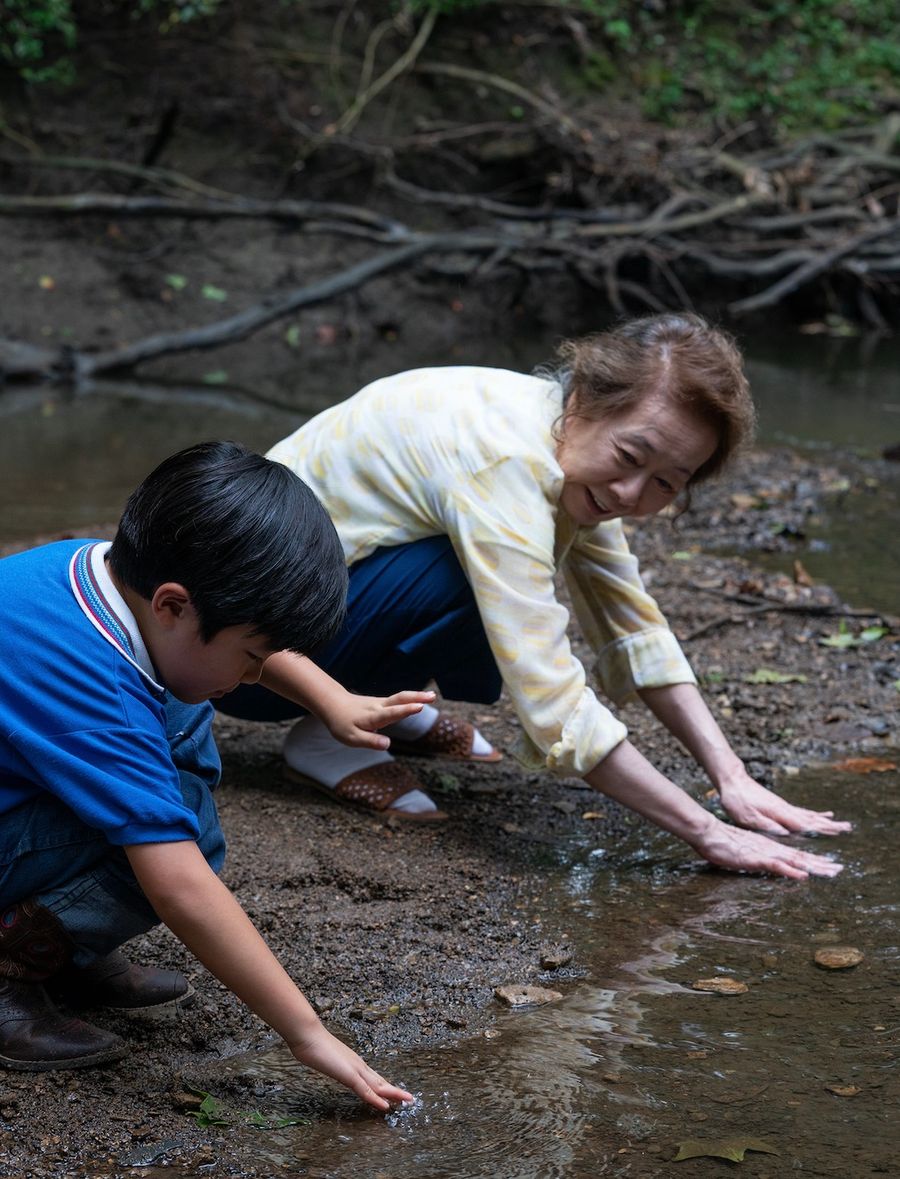All Photos Courtesy of Sade Abiodun / "Godspeed"
FTW’s MEET series is a new editorial column highlighting up-and-coming FTW filmmakers sharing groundbreaking work with fresh takes and fresh perspectives.
Sade Abiodun is the kind of person who you can talk to for hours as you jot down quotes of her wisdom on post-its throughout the conversation. Her musings on the whys of life, the interconnectedness between different schools of thinking, and the unspoken link between beings are a welcome reprieve from the mundane. Given the fact that she's a budding filmmaker and an incoming PhD student at Princeton, where she'll be studying Neuro-cinematics (the neuroscience of film)…well, that checks out.
As she'll tell you, the self-professed "jack of all trades" has always been driven by her curiosity about hidden connection, which is what led the Duke University neuroscience grad to make sense of her questions about the universe through filmmaking.
While working at the Duke's neuroscience lab as a post-grad in 2018, she embarked on her first major short film "Godspeed." The poetic short, marked by spoken word, a captivating score, and stunning choreography, explores the faith, family, and the beautiful journey of Black womanhood. What was simply a way for her to communicate what she couldn't through cold hard science has opened doors for her that she couldn't have imagined. The unique artistic language she formulated while learning about existence at a lab led her to film festivals around the country, including the Riverrun International Film Fest and the Seattle Black Film Festival, and saw her as a finalist at Sundance Ignite's Short Film Challenge.
Watch the online debut of Sade's stunning and poetic short "Godspeed" below and read on to learn more about the academic and artist who's bound to change the way you see cinema.
FTW: What sparked your interest in filmmaking?
Sade Abiodun: I've always loved film. Growing up in South Africa, one of my family’s favorite Friday night activities would be going to the movie theater down the road. We had a pretty good relationship with the theater manager, so he'd often let us in for free. I would just take in all these different movies, see the celebrities, see the stars, see everything happening on the big screen. It was so interesting to me.
But, I also grew up with this mindset of thinking I already knew my path. I was a smart girl, and I liked asking questions, so that means I was going to be a doctor, I was going to be a scientist. Even going into college where I was pre-med for the first three and a half years, I was very much on this path of trying to figure out a way to save the world through medicine.
I got frustrated by that super quickly because I realized how limited I felt. I just knew that for me and my very curious, creative mindset, it wasn't enough. My senior year spring at Duke, I ended up taking a cinematography class. It was mind-blowing. Suddenly I had access to the technical knowledge and expertise behind filmmaking that I'd only ever been able to consume from the observer's side before. I'd been a fan who saw these things and thought it was magical, but never a person who thought I could make that magic myself. I was very quickly drawn to figuring out every which avenue that I could explore things from a creative side, whether it be small projects or just being a constant observer and learner.
Leading into “Godspeed,” I still was (and very much still am) on this path of exploring my career as a scientist—thinking about neuroscience, how the brain works, and wanting to understand more about that. With this newfound element of filmmaking and understanding more about the production side of film, I realize now that there are so many different ways to look at the things about the world that intrigue us all.

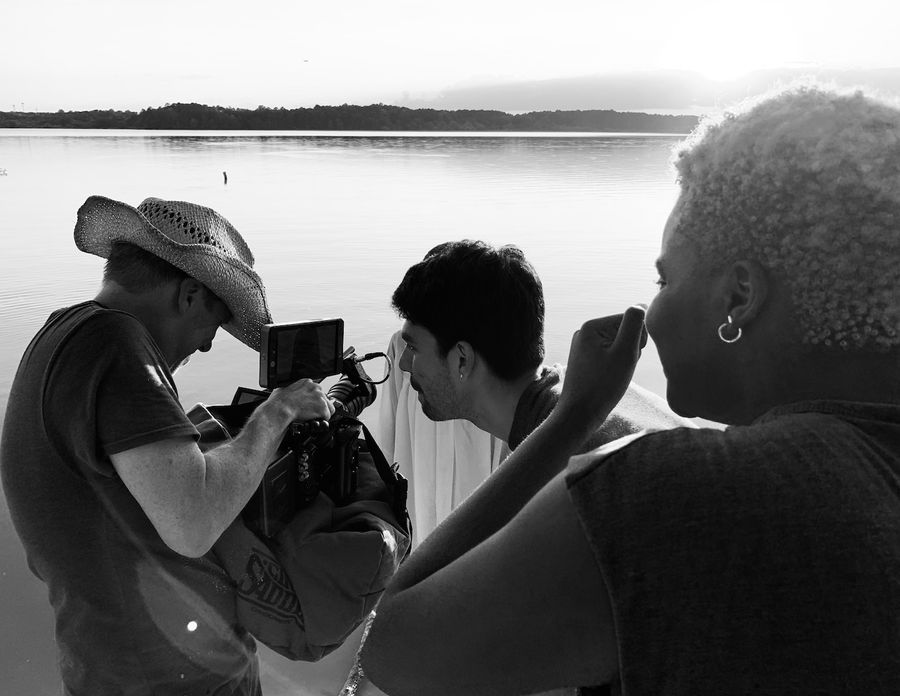
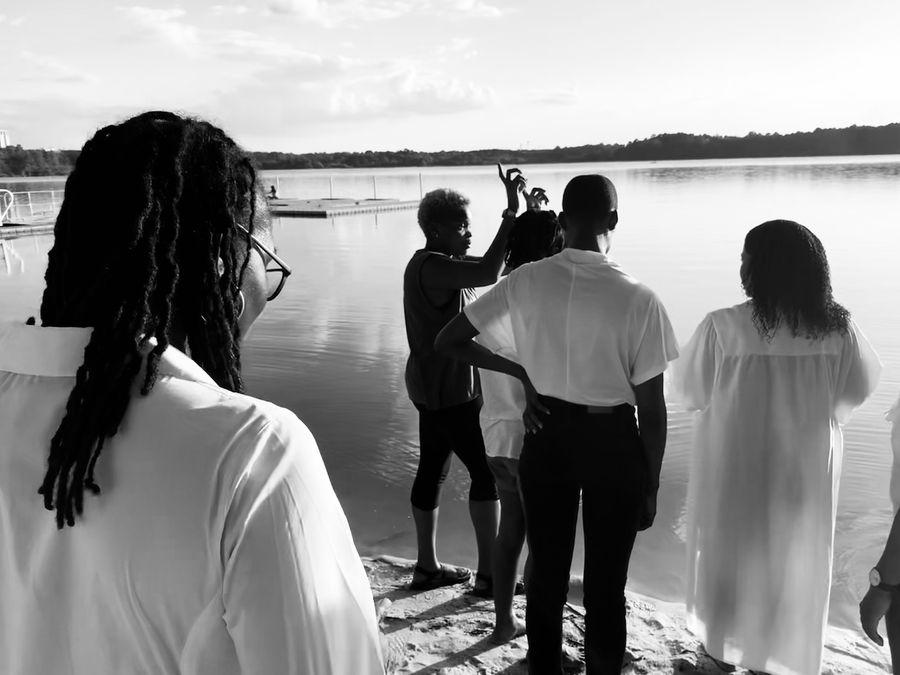
What sparked your interest in neuroscience and medicine growing up?
My dad. My mother is South African and my father is Nigerian, so I'm a first generation American. There are certain expectations that come with that: As the firstborn daughter you carry the legacy of the family. You charge forth. You have to make them proud in everything that you do. At times, that put immense pressure on my shoulders. But, it was also a good thing, because it did push me to excel as I often as I could at as many things as I could.
Right before I had even chosen where I wanted to go to college, my dad said, "Sade, you should consider studying the brain. There's so much cool research that's going on with the brain right now." But honestly, I wanted to rebel against my dad and study something completely different.
Then, I got to school and very quickly started falling in love with neuroscience. It was a welcome challenge to study something that was as mysterious as it was accessible. There were endless questions that you could ask and endless ways to explore it. The neuroscientists that I interacted with, whether they be professors or grad students, all had such unique and individual ways of looking at the world.
How did your neuroscience studies inform your filmmaking?
It’s all about sensory immersion, thinking about the different layers and elements that go into crafting a film. It's not just about what you see, it's about how it's presented to you. It's about what you hear. It's about what you feel the character is going through. A lot of us consume films in that way, where we don't just take what we see at face value, but we're thinking about the full narrative experience of it. Approaching it from a very cognitive perspective, I thought about that very intentionally and said, "I want this specific type of music because I want to create this kind of ambiance, this environment around this piece."
My experience as a filmmaker and my experience as a scientist filled in those gaps of thinking about intentional choices. One of the things that I'm extremely interested in focusing on in my PhD program are those elements of the experience where the audience, or you as a viewer, might not know why a specific narrative or scene induces certain feelings in you. You don't understand why you cry at certain points, or why you get chills. What is it about that film—the cinematography choices, the soundtrack, the way that the narrative is pieced together—that then elicits that subsequent response? That’s what I’m curious about.
What has neuroscience taught you about the power of film?
One of the major things is the impact that visual experiences, in general, can have on our memory. We tie so much significance and value to very specific elements of a film. One might just think, “Oh, it's because it resonated with me. I remembered it.” Oftentimes, our emotional memories are the most salient. They're the ones that we remember most potently even way down the line. Thinking from a neuroscience perspective, or a psychological perspective in general, what is it about a film that makes you remember it? What is it about something that makes it memorable? There is a lot to explore there. There are things that regardless of who the person is, or their genre of choice, they'll see a certain scene and it will stick with them.
On the converse side, people can have a completely different emotional reaction to a scene that they see in comparison to their friend or a random stranger. Thinking about both the congruence and the dissimilarities between what people feel when they see things was something that I had never thought of approaching before.
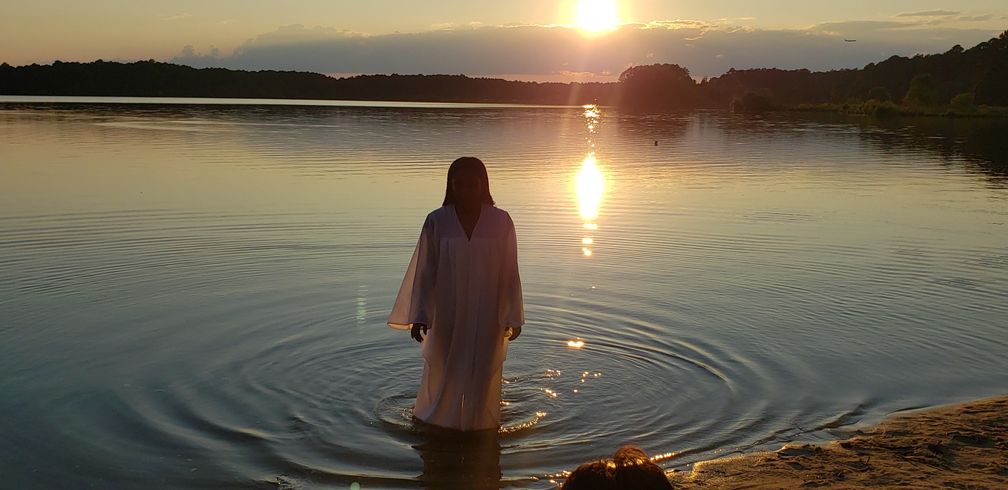
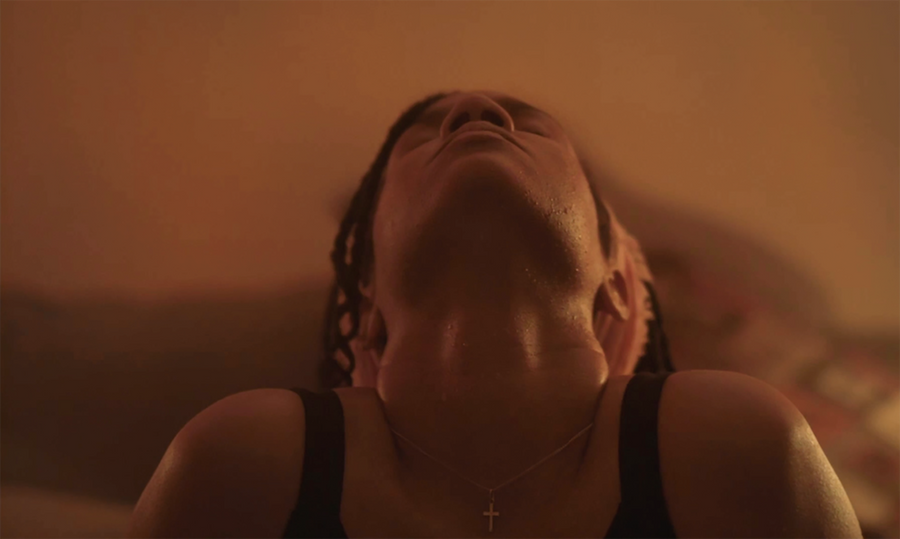
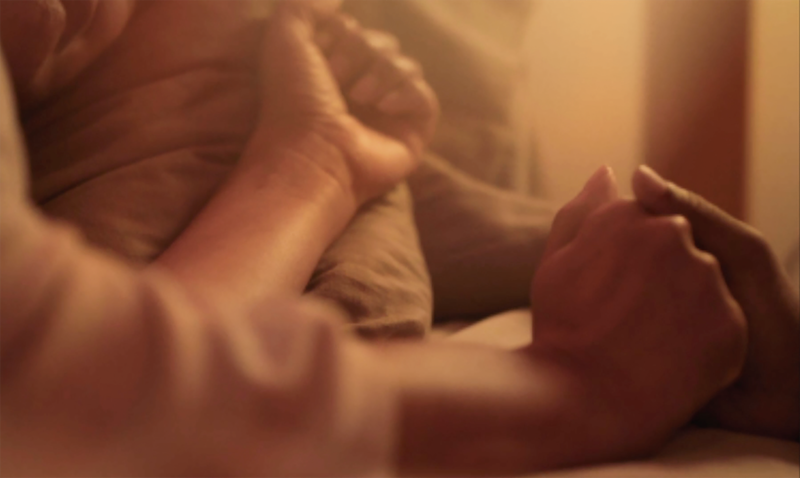
"One thing that was really cool for me, especially [going to] festivals at the same time as I was [interviewing] for grad school, was realizing that if I could put filmmakers in the same room as the neuroscientists, the conversations would be fantastic, because we're fans of each other. We think about how the brain works and how we digest these things, but we also think about why our favorite movies make us feel a certain way. There's so much crosstalk that just doesn't happen because that bridge isn't quite there yet. One of my idealized hopes is maybe to be that bridge."
Are there any filmmakers or any films that inspire you?
Barry Jenkins, Barry Jenkins, Barry Jenkins. Especially with [“Godspeed”] being my first official film. Moonlight and If Beale Street Could Talk were both huge influences, especially in colors, stories, and film craft. Then, even more so than that, the multi-faceted depictions of Blackness. They were dynamic, well-rounded, and stepped outside of the usual realm of what it looks like to be Black on camera. Instead of trying to ‘compensate’ for darkness—both in skin tones and storylines—they brought that out, they celebrated the beauty and richness of it.
The music was so integral in both of those films. It was not just to go along with whatever was happening in the scene, it was actually a scene-builder in itself. Nicholas Brittell’s work on the Beale Street score is some of my favorite of recent history. There was conflict and there was tension.
In terms of other influences, I even drew a little bit from one of my favorite films in the universe [which is] Scott Pilgrim vs. the World.
Me too!
Yes! It is perfect. One thing that I love in that movie, and one thing Edgar Wright does so brilliantly is build music into the scenes. Whatever is going on in the scene you're absolutely drawn into it because you have the graphics, you have the colors, you have the sounds. It's multi-layered. He was one of my first filmmaking teachers; I studied his technique, instead of just watching the film for fun.
The whole concept behind “Godspeed” originated because I was listening to “Godspeed” by Frank Ocean, and had this very powerful visual come to mind. In terms of thinking about a ‘filmmaking approach’—what's your base? Where do you start? Do you start with the picture in mind? Do you start with the story in mind? Do you start with a sound in mind?—I very much started with a sound.
I knew I wouldn't get to use "Godspeed" the song in the film, so instead I anchored my creative process on what the message of Frank’s "Godspeed" was: you go through life, and you have different iterations and phases of who you are, different versions of yourself, but you're still the same person. You should always go back to that original version of yourself, and let them know that you're wishing them the best, let them know that you always love them no matter what.



At that time in your life when you were making “Godspeed,” what were you contemplating?
Existence. I was going through a lot of transition and change, and was at a place of uncertainty in my life where I wasn't sure if I was proud of who I was before that moment, and I wasn't sure about who I was going to be after that moment.
“Godspeed” was not autobiographical. But I fed my experiences into it. I just knew I needed to tell the story, especially as a Black woman who often, even with all of the challenges in the world around me, feels like I can be my own worst enemy and my biggest critic. I needed to tell a story that was beautiful and sorrowful, but also joyful and spoke to the heart of something.
You learned about the art of filmmaking through the cinematography class, but how did you learn how to put on a whole shoot?
The first step was I had to tell other people about this idea that just kept incessantly coming back to me. That was honestly probably the most nerve-wracking step. At that time, I had just graduated and was working full-time, doing research at Duke. Most of the connections that I had while I was an undergrad were still there and were still accessible.
So the first person I went to was my cinematography professor Steve Milligan. I expected him to turn it down and tell me to stick to my day job, but he said, "Well, that sounds really cool. If you can cast it, I can shoot it." I wrote the first draft of the script in four acts and just started sharing the idea with people very slowly.
I was very protective of “Godspeed” at first. I didn't even call it a film. But over time, I opened up to the process of just sourcing and finding as many people who cared about it and wanted to work on it. I told everyone from the get-go, "I don't have funding for this. I don't have a budget. I don't have money, so this will be a labor of love if you do want to take part in it. But, if you do want to, it is your project as much as it is mine."
It was wild to me to see the response to that. I did go through the process of just trying to cast it from friends and acquaintances, but then moved into more professional avenues, like casting resources, making it clear that it was a no budget project.
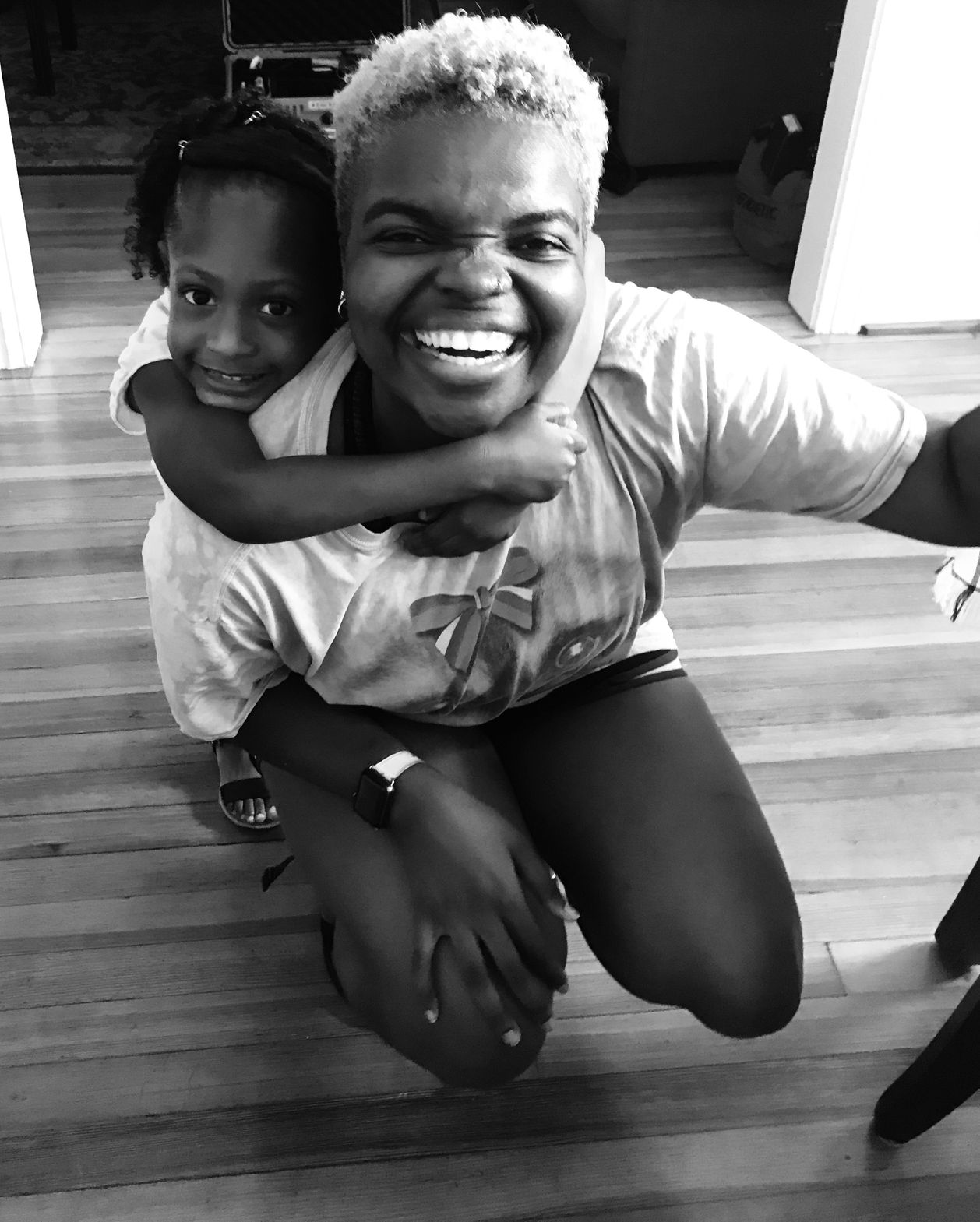


Did you just give people outlines, or a script?
A mixture. Depending on what stage I was at in production, some people got the outline and some people got the script for the given scene that they were going to be in. There were very few people actually who got the entire project or knew what it would look like at the end of it. Part of me wonders if that's because I wasn't sure if I knew what it would look like at the end. It was really people buying into the idea and also me having a very strong vision and image from the pieces of it that I gave them.
Then, the same with pulling in the spoken word artist Nonnie Egbuna, who ended up both writing and narrating the poem. I also had a close friend and creative partner of mine, Michael J. Ivory, help me sort out many of the post-production artistic bits, such as my search for the right music.
With this project, I didn't want it just to be "a film by Sade Abiodun." I wanted to share it with as many people as I could, because that's the only way I was going to learn and confirm that it wasn't just another fleeting pasttime for me. It was a film that could resonate with others, that was tried and tested by other people's creative influences as well.
Where did you shoot it and for how long?
We shot it over the course of four or five days in what is called the Triangle Area of North Carolina. We shot it at a public park/lake area that was truly 10 minutes down the road from my house (I accidentally discovered it while I was looking for a place to knit on my birthday.) It was, again, a matter of stumbling across amazing locations and amazing people who were willing to share their space and resources.
How did you learn how to direct people?
In cinematography class, a little bit of that experience came there because we had small projects that we did where one week we'd be the producer, we'd be the director, we'd be the DP. I would say that's probably where I got the most formative portion of my experience before the fact. I remember weeks before we started filming “Godspeed,” I asked someone, "Wait, how do I know that I know how to direct?" My Google search history was wild back then: ’how does one write a script’, ‘how does one direct this…’
I also had, at that point and along the way, started working up a network of fantastic mentors, both through this project and then on other projects that I got to work on. I learned not only through observing their style and their techniques, but also having no shame in asking questions. Then, during the fact, I learned by trial and error.
I put a lot of responsibility on my cast and crew to make sure that what I was asking of them was fair. I knew that even from my limited experiences in the world of film, media, and entertainment that it's very easy to be in an environment that feels very toxic or very limiting to whomever is there. I felt that responsibility was on my shoulders, not only as a budding filmmaker, but also as a Black woman. I wanted to make the space that I was creating feel as safe as if I were in that space and not over that space.

"I put a lot of responsibility on my cast and crew to make sure that what I was asking of them was fair. I knew that even from my limited experiences in the world of film, media, and entertainment that it's very easy to be in an environment that feels very toxic or very limiting to whomever is there. I felt that responsibility was on my shoulders, not only as a budding filmmaker, but also as a Black woman. I wanted to make the space that I was creating feel as safe as if I were in that space and not over that space."
I know that track is neuroscience, but do you see yourself being a director, too?
Absolutely. I've really been riding this current wave where I believe if a door is open, walk through it. If two doors are open at the same time, walk through both of them if that's physically (and figuratively) possible. Especially because my filmmaking career has started building up and taking shape at the same exact time as my career as an academic, as a neuroscientist, I haven't yet felt the need to disentangle the two.
One thing that was really cool for me, especially getting to go to film festivals at the same time as I was going to interviews for grad school, was realizing that if I could put filmmakers in the same room as the neuroscientists, the conversations would be fantastic, because we're fans of each other. We think about how the brain works and how we digest these things, but we also think about why our favorite movies make us feel a certain way. There's so much crosstalk that just doesn't happen because that bridge isn't quite there yet. One of my idealized hopes is maybe to be that bridge.
I'm currently working on this project where we've been looking at racial diversity in neuroscience and psychology, looking at how many professors in the U.S. are faculty of color. From this project we found out, at least in these preliminary findings, that only four percent of neuroscience and psychology professors are Black. I put that information out on Twitter and it went wild. The very next day, I saw that FREE THE WORK had put up a similar infographic, but in terms of directors that were at production companies…
The same four percent.
Four percent. That was wild to me just because I realized regardless of whether I choose neuroscience or I choose filmmaking, I'm going to be in that four percent. There are going to be a lot of challenges to overcome in either of those fields. There are going to be a lot of doors that still need to be forced open and conversations that still need to be had. But, it makes it even more important to do the work, because we haven't yet progressed to a decent place in either realm, in either arena.
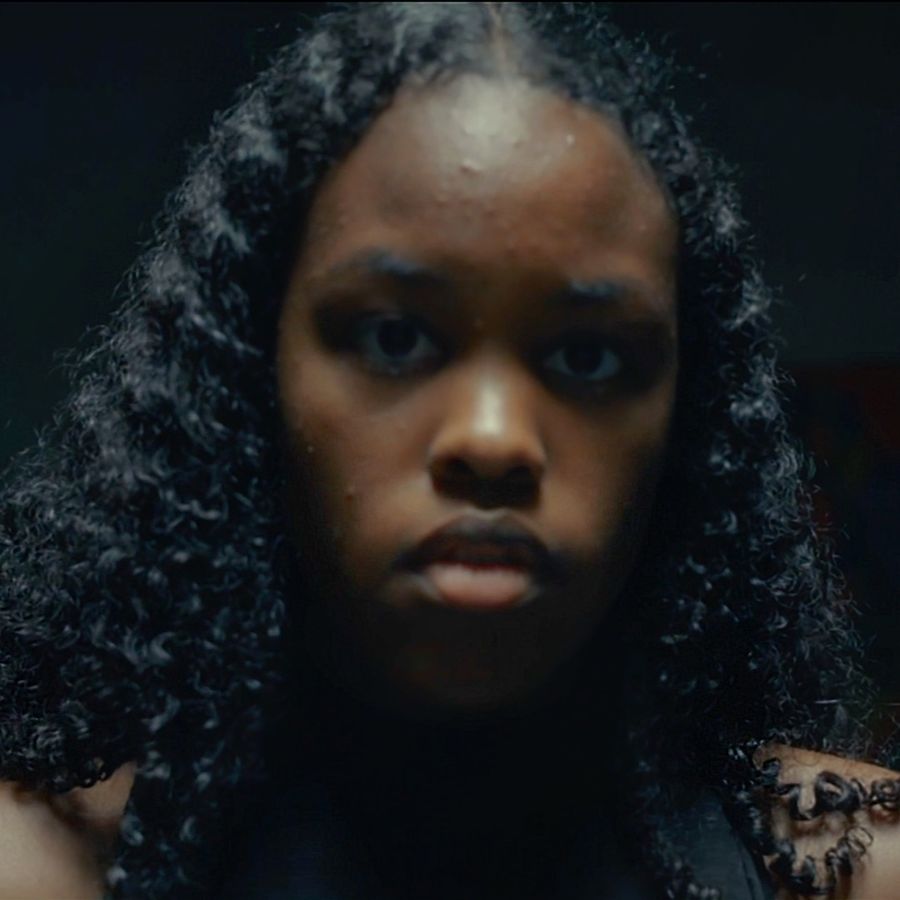
"I knew I wouldn't get to use [Frank Ocean's] 'Godspeed' in the film, so instead I anchored my creative process on what the message of [the song] was: you go through life, and you have different iterations and phases of who you are, different versions of yourself, but you're still the same person. You should always go back to that original version of yourself, and let them know that you're wishing them the best, let them know that you always love them no matter what."
I think you answered my last question, which actually is: What do you want people to know about you as an artist? I feel like the bridge is it.
The bridge. It's going to be my new middle name. And I think it's shown in “Godspeed,” but there's something about creating depictions of Blackness and Black womanhood that step outside of what we normally see being depicted that matters to me. I've found myself right now in this area where people have been asking me about my opinions on race, on diversity, all these different things. I'm not an expert. I am simply a Black woman. Ergo I speak from the experiences I know.
“Godspeed” is was one facet of a multitude of experiences of womanhood, of Blackness, of motherhood, it’s not meant to speak for all Black women. But what I'm hoping is that in continuing to create and highlight experiences that challenge some of our stereotypes, some of the cliches, that it adds to that growing library of examples that we can draw from. So, in the future it won't just be the one film that I cite as a reference on Blackness and womanhood. It will be the library, which, in part, already exists. I still have a lot to learn and a lot to grow, even in terms of my knowledge. But I'm a learner, I'm a learner.

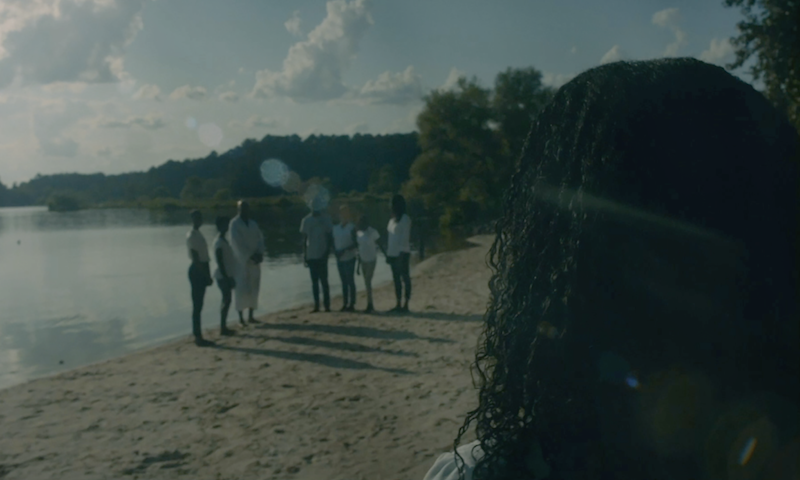
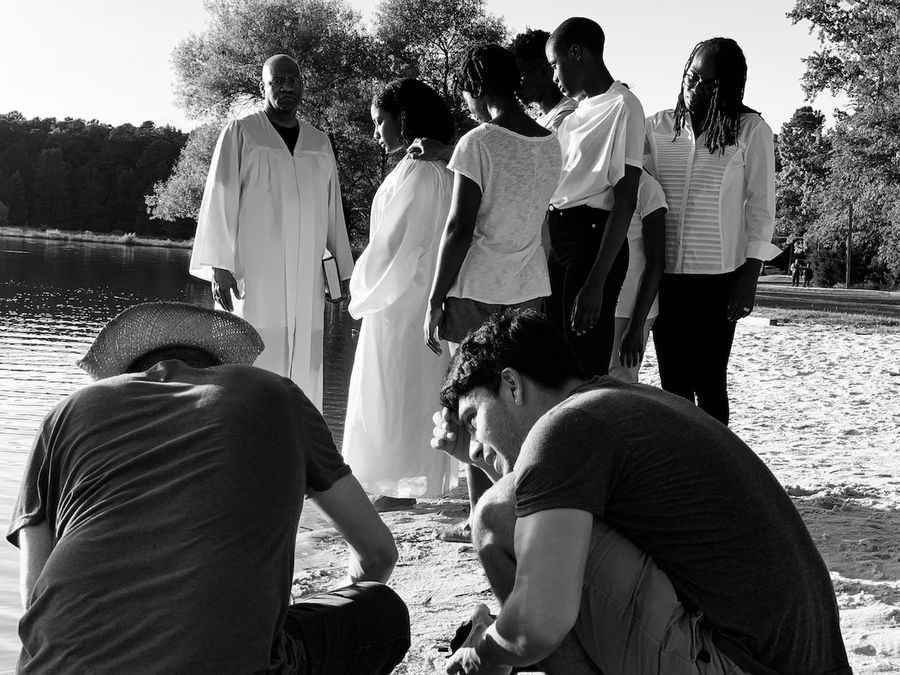
Credits
Directed by Sade Abiodun
Written by Sade Abiodun, Nonnie Christine Egbuna (poem)
Cast Kathy Atwater as Mother (Older), Manasia Cobb as Young Woman / Woman, Arnold Coleman as Pastor, Arykah Naomi DeVaughn as Child, Gabrielle Frimpong as Baptism Witness #1, Kwajo Frimpong as Baptism Witness #2, Ayana Johnson as Mother, Tiffany Jones as Midwife, Sydney Kain as Young Girl, Bailey Loban as Baptism Witness #3, Lashonda Modest as Baptism Witness #6, Malayah Modest as Baptism Witness #7, Kamilah Peart as Newborn,
Producer Sade Abiodun
Associate Producer Michael J. Ivory, Jonathan Michala
Music by Hammock
Cinematography by Steve Milligan
Film Editing by Sade Abiodun
Makeup Department Alexandra Festa
Production Management Lauren Blackwell, Sydney Espy, PA
Camera and Electrical Department Shaun Dozier – first assistant camera, Alicia Farrow – key grip, Kenan Kaptanoglu – second assistant camera, Seneca Modest – still photographer
Editorial Department Matthew Long – post-production assistant
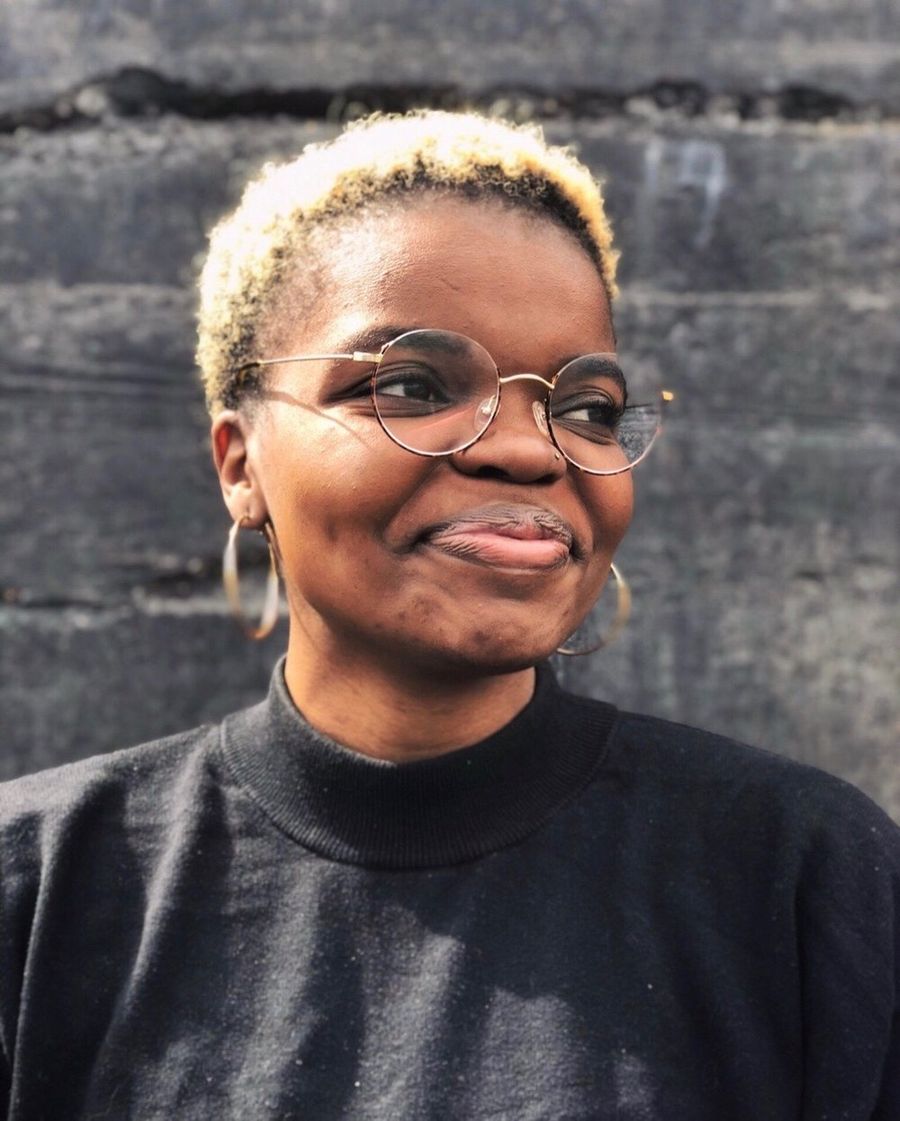
Sade Abiodun
Sade Abiodun is a filmmaker of Nigerian and South African descent. She graduated from Duke University with a degree in Neuroscience, finding her passion for filmmaking later in her path. Her first short film — "Godspeed" — has received high praise, garnering over a dozen festival selections, several awards, and a finalist spot in the 2020 Sundance Ignite Short Film Challenge. She will be starting a PhD at Princeton University in the fall, focusing on neurocinematics—the neuroscience of film. She hopes to bridge the gap between the worlds of film and science, specifically through the study and practice of creating intentional, narrative-driven visual experiences.
You can follow Sade on Instagram and Twitter.
